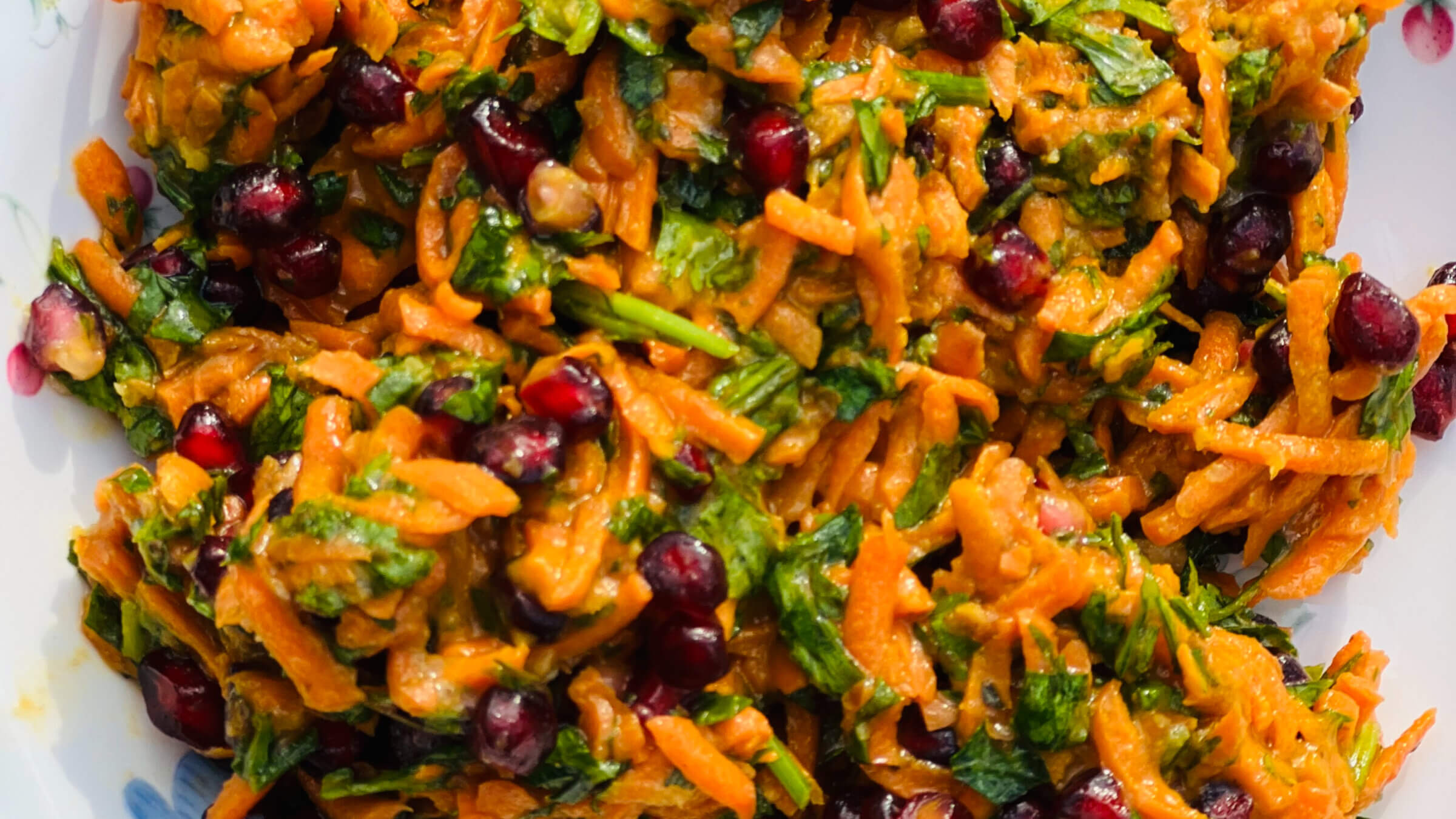Moroccan fish tagine and carrot salad help complete Judaism’s best holiday
It’s not too late to win Sukkot

Carrot Date Salad Courtesy of Rob Eshman
Sukkot, if you didn’t already know, is the best Jewish holiday. You eat outdoors in homemade, temporary shelters. You gather together, maybe drink a little, and enjoy good food and conversation in the company of nature.

I married into Sukkot. In our Reform household, we marked the Big Three (High Holidays, Passover, Hanukkah) and if I learned about the other holidays in Hebrew school, I figured they were for real Jews, or extra credit.
But Sukkot was always a part of my wife Naomi’s life, and it would be part of ours. The first year I figured I could build my own sukkah. I knew what a bamboo hut looked like: I’d seen every episode of “Gilligan’s Island.”
We had a few new friends over, I made sweet corn tamales, and halfway through dinner the sukkah listed north and collapsed. The next year I bought a prefab sukkah kit and focussed on cooking, not construction.
The sukkah goes up for just seven days to symbolize the temporary shelters of the Israelites as they wandered the desert. But very few of us actually dwell in our sukkahs. What they really are is temporary dining rooms. Sukkot is the original pop-up, like, 2,000 years before pop-ups.
And in that spirit, it’s also a time I like to try new dishes for a new year. This year for Sukkot, which ends Sunday evening, Oct. 16, I’m rolling out a carrot salad with fresh ginger, a dash of harissa and a date dressing, and a fragrant tagine that cooks fish (or fried tofu) on a bed of sliced potatoes or zucchini under a bright green, fragrant Moroccan sauce called chermoula.
Add a round honey-glazed pumpkin challah and maybe some flan for dessert, and enjoy another beautiful evening outside.
Carrot Date Salad
Serves 4-6
4 medium carrots, grated
1 cup chopped parsley
1 cup chopped cilantro
1 lemon, juiced
½ cup olive oil
1 teaspoon fresh chopped ginger
5 dates, pitted
½ teaspoon harissa
½ teaspoon salt
Pepper to taste
Place carrots, parsley and cilantro in a serving bowl. In a blender or food processor, add dates, lemon juice, ginger, salt, pepper and harissa. Puree.
Add dressing to carrots and toss well. You may need to add more dressing, or thin with some oil. Serve.
Moroccan Fish Tagine

The chermoula recipe is adapted from one by Martha Rose Shulman in The New York Times. This dish works well with tofu (see below), and a very low-carb version can be made using just zucchini and no potatoes.
Chermoula
2 cups cilantro leaves
2 cups parsley leaves
4 garlic cloves
½ -1 teaspoon chopped fresh red or green chile pepper
¾ teaspoon teaspoon salt
1 teaspoon ground cumin
1 teaspoon sweet paprika
½ teaspoon ground coriander
½ cup extra virgin olive oil
¼ cup freshly squeezed lemon juice
Fish
2 pounds fresh white fish filets (halibut, cod, snapper)
1/4 cup olive oil
1 onion, sliced thin
4 cloves garlic, crushed
2 potatoes, peeled and sliced ⅛ inch thick
2 zucchini, sliced into ½ inch-thick rounds
salt and pepper
Place all chermoula ingredients in a blender or food processor and process until well-blended. It can have some texture if you like but should be closer to a puree.
Heat olive oil in bottom of casserole or tagine. When hot, add onions and garlic. Let cook until fragrant and slightky brown.
Add the vegetables to make a nice bed. Spread some chermoula over the vegetables. Salt and pepper the fish filets on both sides and lay on top of the vegetables. Add a cup or more of the chermoula and rub over the fish. Sprinkle with more salt and pepper.
Cover the dish tightly and cook over medium high heat on a gas stove, or in a preheated 375-degree oven, about 20 minutes. Keep warm until serving.
Serve with lemon slices.
Note: This recipe works well with tofu, too. Use two packages of extra firm tofu. Slice in ½ inch sections, drain and press dry. Sprinkle both sides with salt and pepper. Heat vegetable oil in a skillet and fry on both sides until browned. Then use them in the above recipe.

















